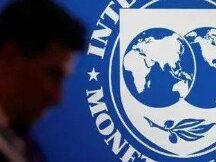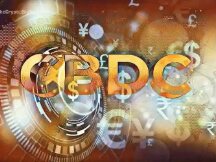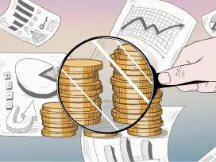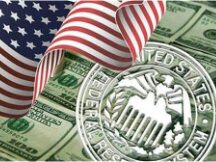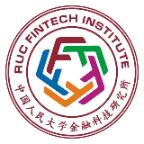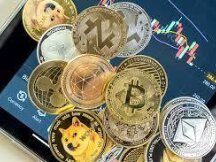Global Stablecoins: US Consensus Financial Rule Implementation Decisions
In recent years, education and research on Global Stable Coin (GSC) has been in full swing and has not provided any real data, most discussion of GSC is based on thought patterns. The Federal Reserve simulated three scenarios: GSC deposit-swap, GSC cash swap, and GSC fixed government debt to assess the impact of the GSC system and focus on the bank's assets and collateral, reserves and debt. security. on assets, etc. In March 2021, the FEDS released the US Federal Reserve's scenario simulation document for global coin stabilization through US speculation.
data analysis
In recent years, academics and partners have paid increasing attention to the impact of financial technology on the regulation of businesses and financial institutions. Woodford (2000) explores the challenges that midsize banks will face as businesses and payment ecosystems go digital. Recently, the development of digital advantages has accelerated and research in this area has become more mainstream. Prasad et al. (2018) announced another 'cast' that describes how digital advantages outweigh the advantages of money management, while Adrian and Griffoli (2019) discuss the digital results for the next several years. In addition, for the Stable Coin, Adachi (2020) and the ECB Encrypted Assets Working Group (2020) studied the risk policy and solutions related to Global Stablecoin (GSC) using the as scenario method.
Additionally, this article identifies GSC revenues to be further developed in various contexts and seeks to support the improvement of global financial security by establishing a general calculation goal. The inspiration for this article is from “Fund Flow” prepared by the BIS in the Central Bank's Digital Currency Report released in March 2018.
Procedures and assumptions are important
Research in the area of Global Stablecoin (GSC) has been completed in recent years, but since there are no real examples, GSC services are still crossing the river from rocks and examining empirical is not easy. To this end, this article establishes a simple financial framework using a set of prohibitions and describes various changes in CMS. This approach simulates the financial performance of the GSC consumer community, the GSC network, conglomerates, and large institutions such as the Federal Reserve Bank (silver and the Federal Reserve Bank) in our case. To this end, this article uses the T-count process to learn about the peculiarities of interactions between identical documents from different stakeholders in different situations. In the article, the exchange of cash flows on T accounts is only the result of changes in the previous market, but in this article we believe that this allows us to determine the changes in the balance sheet.
The main considerations are:
Consumer Address: All GSC users must be in the United States.
Benefit at a limit: GSC pegs assets in USD only.
Back-to-back / guaranteed GSC: all outstanding GSCs are protected at all times by guaranteed assets held by the GSC reserve system, i.e. guaranteed assets.
GSC Financial Brokerage (GSC Financial Brokerage): Authorized securities brokers and providers of the GSC network cannot act as financial intermediaries.
GSC remuneration: GSC does not receive any interest.
Providers: Only authorized providers and wallet outlets outside of regular banking can deposit GSC funds.
Depository vs. Depository bank (deposit bank vs deposit bank): some banks take responsibility for custodian banks of GSC leaders, allowing GSC procedures to preserve bank or US deposits.
Scenario 1: GSC Exchange rau deposit
This sentence creates simple events (for example) that can do multiple iterations and extensions. In addition to the above assumptions, other root causes are:
Increase in consumers 'financial resources for consumers CGC (consumers' financial resources): bank accounts
Bank users: US banks are not regulators
Custodian Bank Address: United States
GSC reserve assets (GSC reserve assets): bank deposits
The main steps for users to exchange US dollars for GSCs are as follows: 1. Authorized resellers and non-bank wallet providers are responsible for authorizing users to withdraw a portion of their dollar deposits from the bank. non-fiduciary banks in exchange for GSC. Update of GSC balance. 2. Authorized resellers and wallet providers send information to GSC manager, GSC request and consumer credit in USD. 3. The GSC reserve system requires the financial management company to receive US dollars from customers and use them as bank deposits.

Figure 1: GSC Flowchart of USD Exchange from Scenario 1

Figure 2: Scenario 1 Each person shares a balance sheet
The balance sheet of the financial institution as a whole has not changed significantly as well as its composition. The reason is that the bank where the user does not keep the exchange of assets, deposits and assets in USD and discounts (deposits are assets and accounts. For banks), but in the end account, USD is deposited into the GSC bank account (the GSC bank manager is responsible for USD received by the control system), resulting in increased finance and accountability of banks. GSC Bank.
As a result, unregulated bank users raise interest rates to attract more money or reduce their capital and liability. As the assets and liabilities of the bank custodian increase, it may reduce interest rates by lowering interest rates or by doing nothing. Deposit. Therefore, it can be said that now the big banks (insurance banks are usually the big banks) will enter the small banks, which will increase the savings of the big banks.
Scenario 2: Financial transformation for GSC
In Scenario 2, the way users collect GSCs is reconciled from exchanging deposits to exchanging cash. This change is expected to affect the balance sheets of all bank banks, which is completely different from Scenario 1, as it reduces profits and increases bank savings. This is because if the user deposits cash, the assets and liabilities of the bank are not kept, but if the user transfers cash into the deposit, then exchanges the deposit for GSC, the assets and liabilities of the funds. illegal. bank reduction. Again, it puts the assets and liabilities of the non-fiat bank, but the GSC savings account receives the final deposit (the GSC system allows to receive USD deposits and deposits in the supervised bank, which can provide GCS depending on the exchange.). The assets and liabilities of the financial institution as a whole increase. In Scenario 2, as in Scenario 1, an increase in assets and liabilities could allow regulated banks to lower their deposits appropriately, and could even lead to an increase in assets. Large banks will have access to smaller banks. .

Daim duab 3: Scenario 2 Situation assessment for each participant
Scenario 3: GSC repairs the national debt
In the latter two cases, the GSC system automatically linked GSCs to bank accounts, but Scenario 3 was changed to overdraft US Treasury securities and users continued to exchange their deposits for GSCs. National debt in the GSC system is held by non-bank financial institutions (NBFIs) such as wealth management companies.
Interestingly, Scenario 3 is the same as Scenario 1. The balance sheets of all financial institutions remain unchanged in size and composition. The reason is the first, that in the case of unregulated banks, as deposits are used for trading, assets and liabilities are reduced. this is a deposit, it is akin to a bank lender to the deposit person). At the same time, the assets are increasing, but these assets are not in US dollars. The assets and liabilities of the entire bank remain unchanged as the trustee receives US dollars and then goes to NBFI to purchase the government contract.
However, unlike Scenario 1, an NBFI source was added to the investigation in Scenario 3. In Scenario 3, the GSC reserve system has national debt, not US dollars, and US bank losses are collected by NBFI and stored in NBFI personal bank accounts. So, in scenario 3, the money from the non-fiat user bank is transferred to the deposit bank NBFI, not to the GSC bank. If the NBFI banks are larger than the users of the non-performing banks, the larger banks will continue to be smaller companies as described in Scenario 1, but will not be as heavy as Scenario 1.
As these markets converge over a longer period of time, the benefits of securities assets traded from existing deposits to KTBs will broaden further, which will negatively impact all banking applications and the benefits of banking. banking activity, and will have a greater impact on small banks.

Figure 4: Scenario 3 graph for each participant
Discussion and Analysis

Daim duab 5: Assets vs Liabilities in three scenarios
Asset and Liability Analysis of Commercial Banks:An analysis of our situation shows that the widespread use of GSC could affect the USD income of all banking institutions (e.g., assets and liabilities, liabilities, including savings and deposits) without significant changes in the way the business operates. Until now, there were concerns that the CMS would weaken the role of banks and eliminate deposits from banks, but in this article the first three cases are the results showing that the product of the CMS will be final. back to the financial system.
From any point of view, the assets and liabilities of companies do not change significantly, and the distribution of profits in banks does. Scenario 1 and Scenario 3 both indicate that large banks will ultimately be more profitable than small banks to store or absorb deposits, and this allocation makes them more secure. , they may need to take action, reduce their balance sheets, find riskier ways to collect the down payment, or raise interest rates on loans. The impact of small banks partly depends on the needs of different consumers (geography, demographics, etc.) for GSC and existing banking relationships. In addition, when introducing CMS, the speed of implementation is very important and will affect the performance of non-regulatory banks during the transition period.
The financial risks associated with GSC will be greater than traditional bank deposits. GSC may not offer as much insurance coverage to consumers in the fiat money industry. As a currency, investors in GSC must take into account all the risks of the assets attached to GSC. The risk with GSC is that the CBDC (central bank digital currency) is different as to why people are reluctant to use GSC to keep prices low and reduce risk. This is because in times of crisis people can swap GSCs faster for better deposits or benefits, which will have a bigger impact on the monetary balance, including lower deposits in banks linked to GSCs. From.Analysis of the assets and liabilities of the Federal Reserve thiab:Here, the Fed is referring to all of the companies listed above. In a unfolding situation, the assets and liabilities of the Fed are often unqualified. In Scenarios 1 and 3, the Fed's balance sheet does not change in size or composition, but in Scenario 2, profits decline and continue to rise. In Scenario 2, if the Fed chooses to keep a stable level in terms of falling profits, it could introduce monetary policy to reduce the size of all of the Fed's assets.
The distribution and demand for storage materials can also change. In all three cases, the big banks have increased their deposits, so that most of their income comes from these big banks. If deposits in the GSC savings system turn out to be more volatile than other types of deposits, or if the supervisory bank has not implemented the solution, bank storage requires a virtual resource (HQLA) to avoid this guy. deposit. The risk arising from the deposit may increase the retention demand of the entire system. In many cases, an increase in the GSC system is offset by the amount of the total loss on the stock market (often seen as a stable source of funds). The Fed may need to adjust its strategy to counter rising demand, which would increase the Fed's investment and overall liability. However, the changes in the Fed's assets and liabilities and the special rules outlined here are unlikely to affect key fiscal policies, as they should. Another phenomenon occurred last year. In addition, the reduction in profits in Scenario 2 would reduce Federal Reserve seigniorage, which would reduce income.Security advantages:Based on our analysis, demand for securities (banks, US Treasuries, etc.) should remain unchanged. What will happen in the field of securities is to increase the demand for a certain type of asset (because they have been repaired), decrease the demand for other assets and affect the owners of those assets. active. So while the adoption of GSCs may lead to price frustration and a clawback for some asset retailers, it will not facilitate exchange rates and price expansion and the return of all treasures. , which can have far-reaching effects.
future expectations
As the actual GSC situation may differ from our situation in this article, the results of the above review may be helpful in some ways, and this article is also the basis for future GSC training. The issues in this article have certain limitations, and the research team will discuss GSC gradually reducing restrictions in the future. In a future FEDS Note article, the research team plans to use a similar approach to identify GSCs internationally, such as the GSC which allows foreign countries to endorse the USD tool. Going forward, we'll also look at what is driving GSC's demand, such as the market or retail at cost, the potential irrelevance of GSC, and how this change has spread. There are also more complex issues, such as how GSC compares to its competitors, how to widely use central bank (CBDC) or multi-CBDC digital currencies, and the coordination process. What are the implications of GSCs and CBDCs?

Scan QR code with WeChat
